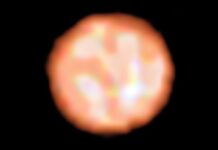The skies above Earth have been unusually active in late 2025, with the sun unleashing its largest solar flares of the year. These eruptions triggered spectacular auroras visible as far south as Mexico – and, for those watching from the International Space Station (ISS), a rare cosmic event. Astronauts aboard the ISS captured an image of comet Lemmon appearing to be “absorbed” by the shimmering curtains of the aurora borealis.
What is Comet Lemmon?
Comet Lemmon, or C/2012 F6 (Lemmon), is a long-period comet originally discovered in 2012 by the Mount Lemmon Survey in Arizona. These comets are icy remnants from the Oort Cloud, a distant reservoir of debris surrounding our solar system.
As the comet approaches the sun, it heats up and releases gas and dust, forming the bright tail that makes it visible from Earth. Comet Lemmon takes roughly 1,350 years to complete a single orbit around the sun, making appearances like this one exceptionally rare.
Why is This Photo Unique?
The ISS orbits Earth at an altitude of around 250 miles (400 kilometers), giving its occupants a unique vantage point for observing celestial events. While astronauts took shelter from radiation during recent solar storms, they still managed to photograph the comet aligned with the auroras.
This alignment is remarkable because comets are infrequent visitors to our night sky, and seeing one positioned against such a vibrant aurora is an uncommon sight. The image highlights the interconnected nature of space weather and celestial mechanics: solar activity powers the auroras, while comets, originating from the farthest reaches of our solar system, occasionally grace our view.
This moment is a reminder that space is not just vast and empty, but a dynamic system where seemingly distant events can align to create something truly extraordinary. The combination of a rare comet and powerful auroras serves as a vivid illustration of the universe’s complex beauty.




































